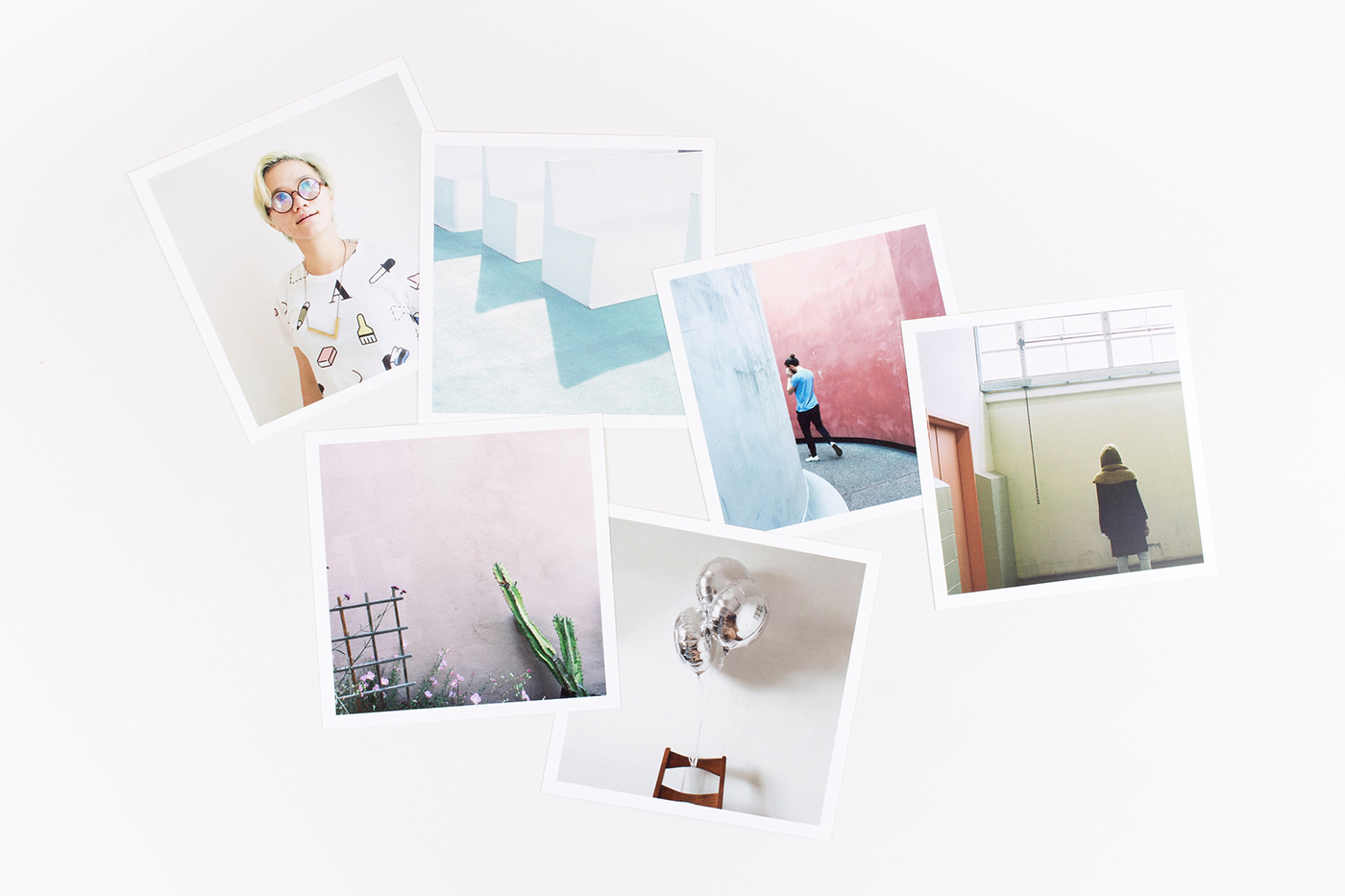DENISSE KURI
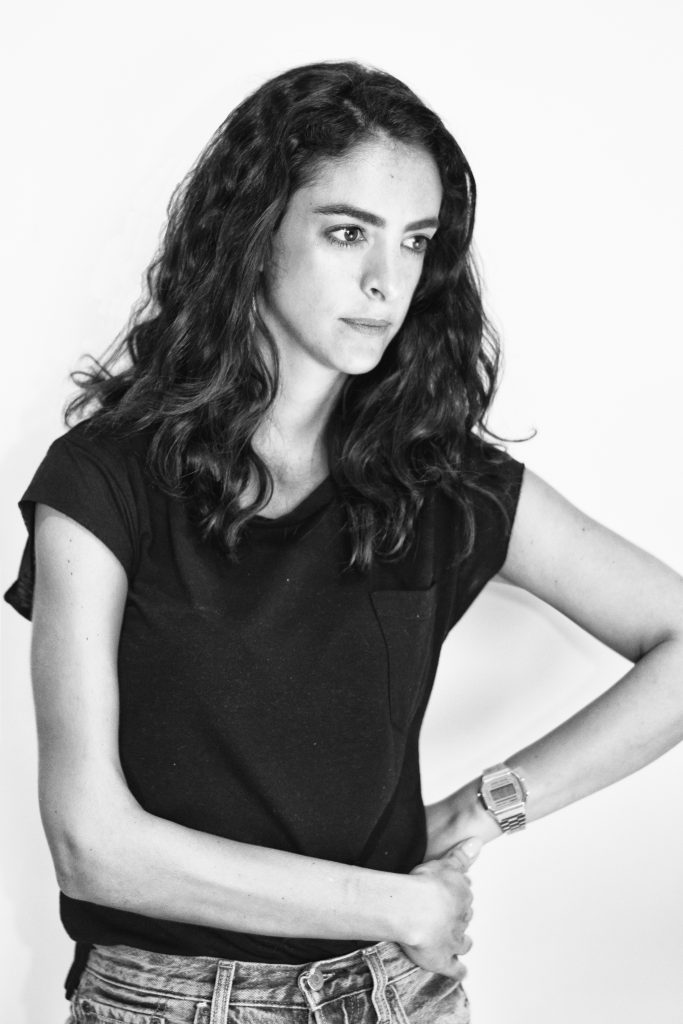
A DESIGNER ON THE ASCENT
By: Lilia Davis
Photos: Verónica Paredes
We celebrate Denisse Kuri, Mexican designer named as one of the faces of success in Puebla 2018. Her designs illuminate and render homage to native craftsmanship, and have been worn by beautiful women, including the Mexican Miss Universe, Ximena Navarrette.
Her organic designs exemplify emerging modern fashion design in Latin America. Denisse’s further mission is to value indigenous women for their work and for their contributions, but above all, help them become independent both emotionally and economically.
================================================
I stumbled across Dennisse Kuri, almost by chance, while researching Mexican textiles, especially textile design with a modern attitude. I immediately had an affinity with her approach to fashion design and the philosophy behind her work with Mexican textiles and the dressings they are incorporated within. So I contacted Denisse Kuri in Puebla, México and here Denisse talks about her clothing brand, the importance of Mexican textiles and the emotions you experience when you wear them, the appreciation.
Can you tell us how did you get started?
«I studied Textile Design at the Universidad Iberoamericana in México and to comply with my social service requirements there was an option to work with indigenous textile artisans in Chiapas. So I went there and I had the opportunity to learn more about the artisans that make these textiles. I fell in love with their work, almost immediately, it is unparalleled and I learned much from them. In a form of appreciation for their knowledge that they freely shared with me, I decided to honor their talents by using the platform created by my brand.»
When you started this project, what woman did you have in mind that you hoped would wear your designs?
«A woman who is interested in indigenous textiles and simultaneously a woman who likes to wear something more fashionable in those textile, a little different, that is without falling into the typical Mexican folkloric garments. A woman that wants to express herself with the design of her clothing, especially an appreciation for the craft involved in their making.”
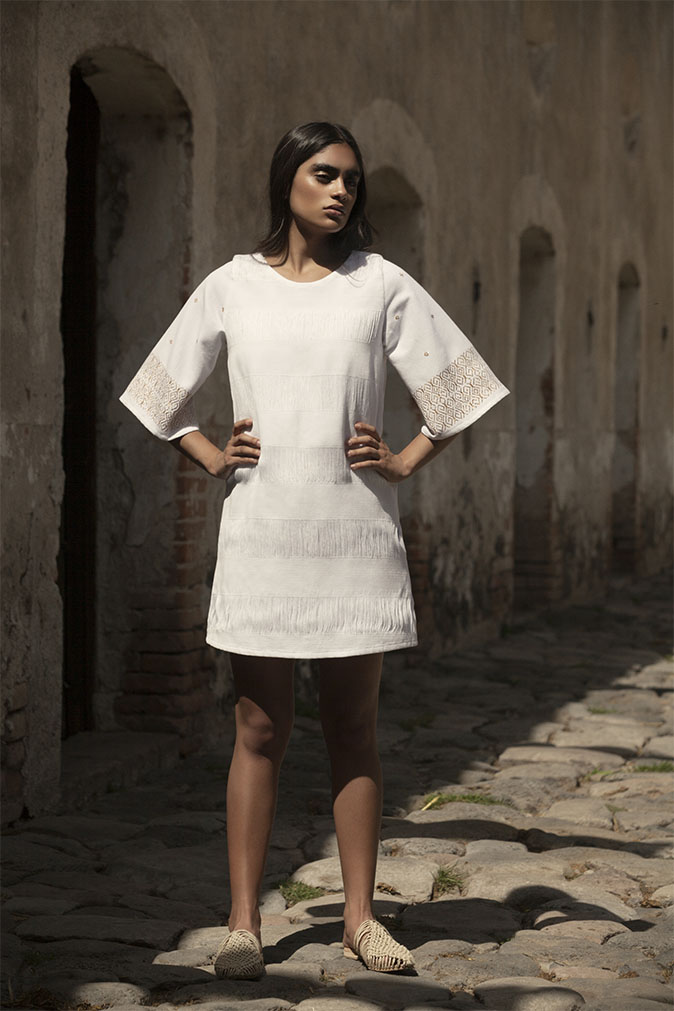
How do you avoid falling into the typical folkloric look in your creations?
«I try not to fall into what is considered typical through experimentation, and we do that when working with indigenous women by using their respective techniques for weaving and embroidery, we no longer look at what they do as just as crafts, we want what they make to look like a fabric, and be considered as such, and the final result, a contemporary garment interpreting my designs.»
What was you inspiration at the start?
«The inspiration for this whole project arose more or less as a result of a question: how could we create garments in which we could feel the stories that each craftswoman is telling us through her embroideries. I was also very inspired by the obvious dedication that the individual artisans have to their work.»
What were the obstacles?
«The first thing I felt as an obstacle was the lack of support, people told me: ‘No one is going to buy anything from you, nobody will wear this even for a wedding’. But I stuck to my ideas, I made my designs using the textiles of the artisans but with a modern touch, – I told them: ‘If nobody puts these clothes on – I will wear them myself!’ So I established the brand in 2010.»
Denisse has a sophisticated silhouette and could easily be her own model, and she often does model her own dresses, and when posting Instagram photos she calls it very appropriately with hashtag: “#meWearingMe” – either walking by the beach, Sunday lunch with friends, or just because.
AN EMOTIONAL EXPERIENCE
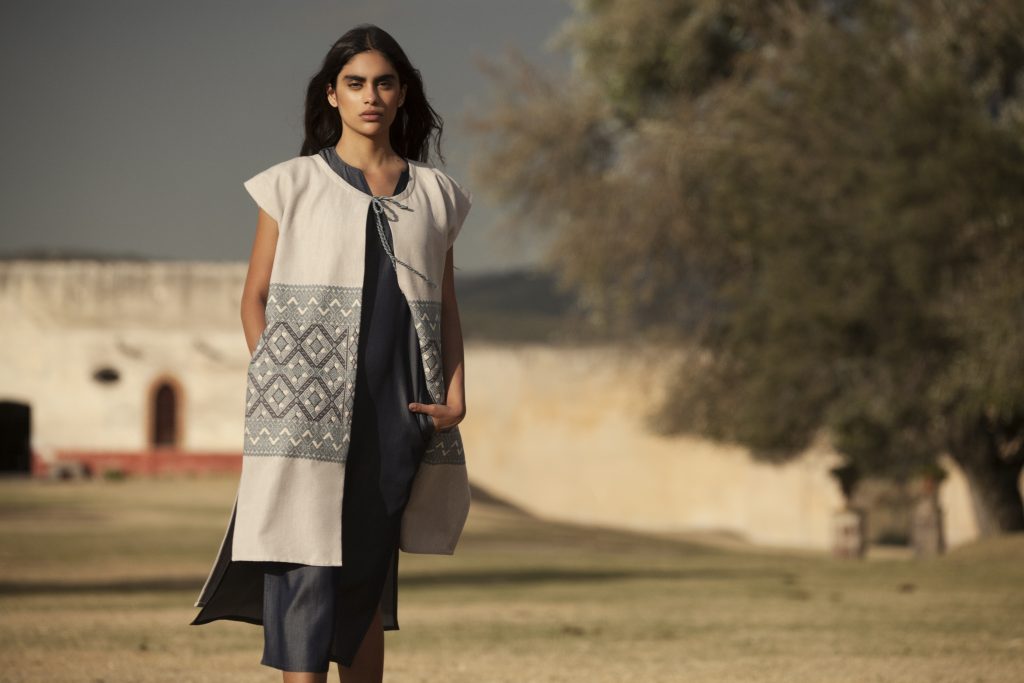
Why did you decide to focus your designs on the native Mexican culture?
“All the time that artisans use in the patient elaboration of their pieces inspires me much more than having clothes made in a factory with machinery rather than hand – producing like a thousand dresses a minute. For me, there is no feeling in that, no emotion. On the other hand, the work of the artisans, made by hand, has more meaning and emotional importance for me, because you feel that they include part of their own lives in each of their works. By wearing their clothing, besides the dresses, skirts and blouses, being very beautiful, you have an emotional experience as well.”
Secrets of your success?
«Well, I don’t know if it’s a secret of my success, but maybe I’m a bit of a pioneer. Now we have had an evolution, it is no longer the traditional textile, we follow the same age old techniques but at another level and thus we manage to stand out from the others.»
WEAVING STORIES FROM THE HEART OF PUEBLA
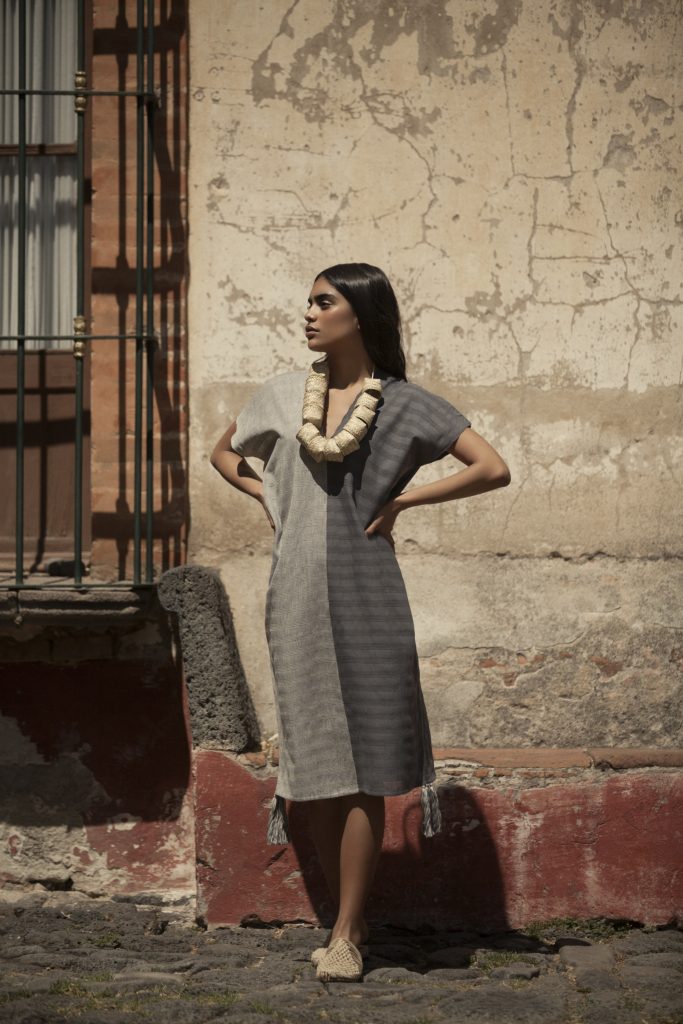
Which communities of artisan women in México do you work with?
«We currently work with several groups of artisans from different communities in Chiapas, but also from the states of Veracruz, Puebla and Guerrero. We are experimenting with their respective weaving and embroidery techniques to produce contemporary garments. Rather it is truly a collaborative work. We design and they interpret that design.»
See video of Denisse Kuri by Atentica Collective here: Mexican craftswomen
What is the «Pepenado» embroidery?
We often use this popular embroidery technique in our blouses and skirts. The “pepenado” embroidery, (typical of the Northern Sierras of Puebla) is made with the help of a needle and thread of different thickness, and in the loom of waist, which is denominated thus because the end of the intertwining of the thread is done with the body of the weaver; that is to say, the woman uses the strength with her hands and the rest of the body to pull the loom that is hanging either from the ceiling, the wall or a tree, as can be seen in the plates of the Mendocino and Florentino Codex.
“All the time that artisans use in the patient elaboration of their pieces inspires me much more than having clothes made in a factory with machinery rather than hand – producing like a thousand dresses a minute. »
Denisse Kuri
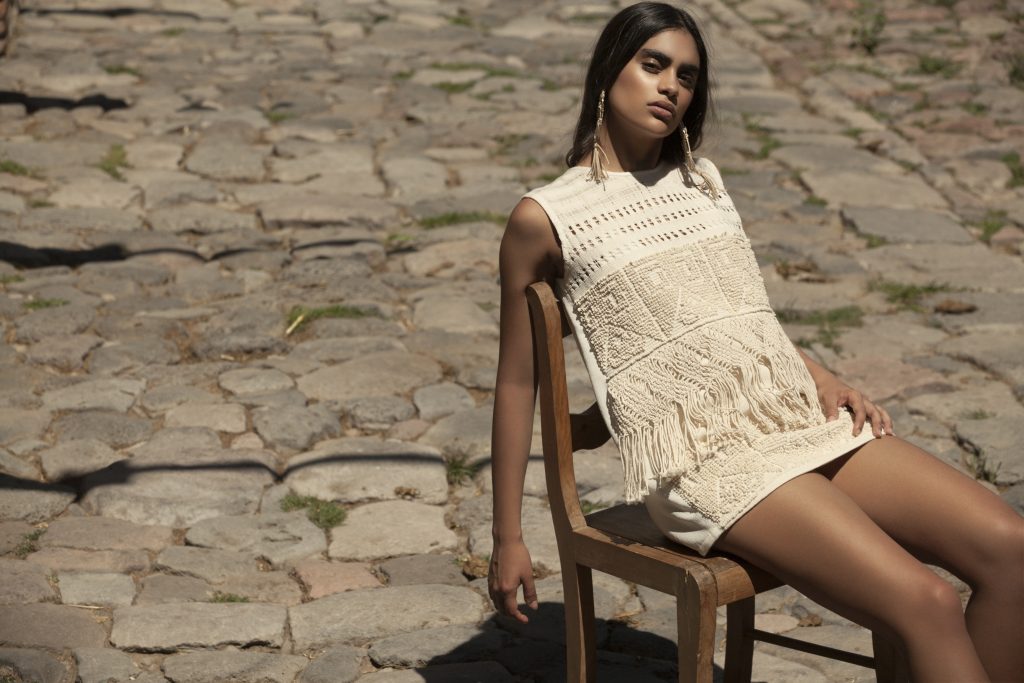
What is your favoring embroidery technique?
I specially favorite the Punta de Maguey (from Pauaután de San Pablito) a very special technique only three or so women in the community know this traditional technique now. It is so called because as they knit, they put the colored yarn and with a maguey tip they take out the yarn, and go on forming the texture with a figure. They result is outstanding, very beautiful. To preserve this embroidery is very important to me.”
How did you come about dressing the Miss Universe Ximena Navarrete, with a China Poblana Dress?
“I was thrilled to dress Ximena Navarrete, with a China Poblana dress. I think being from Puebla especially, and because of my work with Mexican textiles, it was the perfect match for that project. I designed a contemporary version of the traditional China Poblana dress by using a long skirt made of sequins embroidered by hand, highlighting the gold, orange and red color, and in the blouse, I also used the embroidery with the Chakira beads from the community of Xochitlán, Puebla. She loved it.”
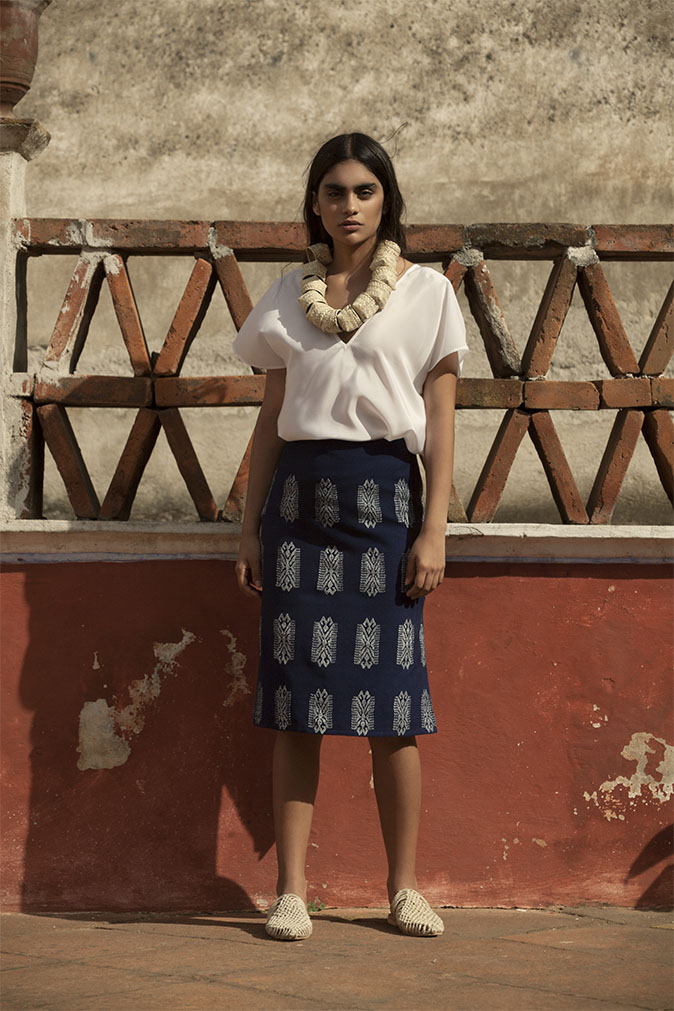
WEARING ART IS BEAUTIFUL, AND A PRIVILEGE
Your Mission?
«My essential focus in this project is to preserve the tradition of indigenous textiles in Mexico. As well I seek to value indigenous women for their work and artistic and cultural contribution, but above all to help them to become independent both emotionally and economically.»
What can we expect in the future?
Continuing growing our presence in México, but aiming to grow in the United States, you can find some of my pieces at Cooperativa Shop in Houston, Texas and to grow in Europe as well via London. More importantly, to be able to work with more artisans in other states of México.
Advice for a women fashion entrepreneur?
“My advice is that you simply «go for it» and do it, but don’t expect to succeed the first time. Try to look for something different, do something distinct, something that attracts attention. Make your project aimed at helping someone else and do it with all of your heart.”
———————————————
Mexican writer Carlos Fuentes, in the book Diana: The Goddess Who Hunts Alone, once described Puebla “as surrounded by foggy piquant mountains, where patience and goodness accumulate…”
That appears to me to be the underlying spirit of Denisse’s enterprise in addition to the creation of singularly beautiful clothing. I myself would add that the feeling of summer is present in Denisse Kuri’s designs as well as the artisan spirit of indigenous women whose talent for handling Mexican textiles is unmatched.
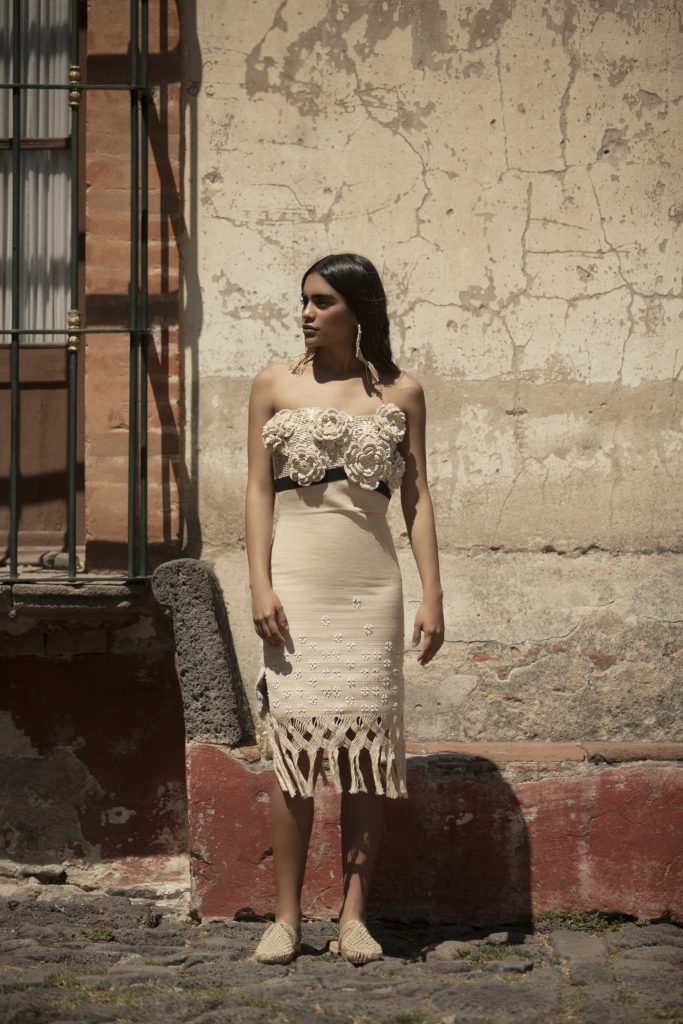
Webbsite: http://www.denissekuri.mx
Twitter: http://www.twitter.com/denissekuri
Facebook: http://www.facebook.com/denissekuri5
